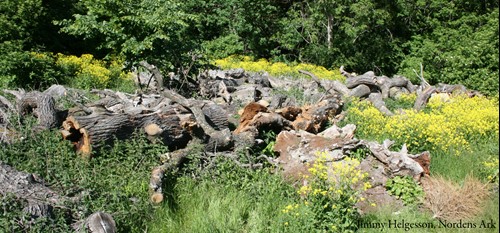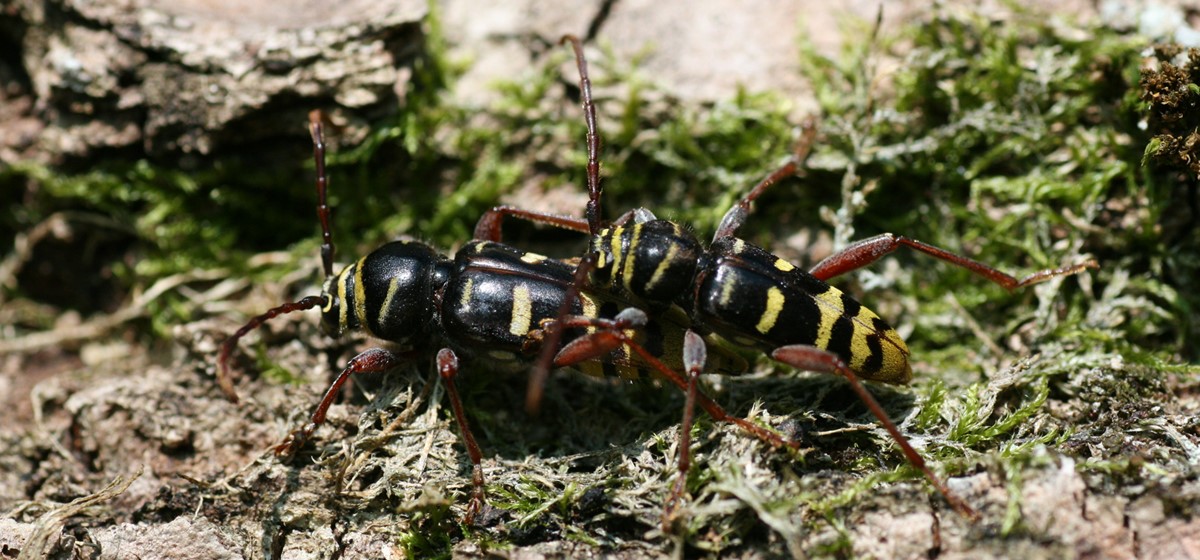Longhorn beetle conservation
The longhorn beetle is one of Sweden's rarest beetles. The species is strongly associated with dead oak wood that are exposed to the sun. The larva develops between bark and wood where it eats its way through the phloem. Development from egg to beetle takes about two years.
In the past, the range extended across large parts of southern Sweden, but the species is currently only found within a limited area in the Stockholm region. The main threat is the lack of large areas with old rough oaks and a general overgrowth of the land. Today, the longhorn beetle is classified as Critically Endangered on the Swedish red list.

Sunlit groves of oaks - a perfect biotope for the longhorn beetle.
What we do at Nordens Ark
Since 2006, Nordens Ark has worked with the breeding and release of longhorn beetles. The work takes place in collaboration with the County Administrative Board in Uppsala and Kalmar counties, and within the framework of action programs for threatened species.
The breeding programme of the longhorn beetle is unique and the only one of its kind. Over the years, we have developed an efficient breeding method where we annually produce between 500-1000 beetles for release. Breeding takes place in the Nordens Ark breeding facility, where we have built several outdoor aviaries in a sunlit location. The aviaries are filled with rough-barked oak logs where the beetles lay their eggs.
Breeding aviary.
In mid-June, the beetles hatch out of the logs. During the following 2–4 weeks, the beetles that hatch are regularly released. Before releases, males and females are allowed to mate. This is so that the females will immediately start producing eggs when they are released into the wild. Releases take place at several locations in Kalmar and Uppsala counties where oak environments have been restored. Thanks to the releases, the longhorn beetle is now found again in two places in its former range.
News from the project - March 2024
In 2023, we released 250 longhorn beetles, distributed in both Kalmar and Uppsala counties. During the spring of 2024, more breeding cages will be built to expand breeding work with longhorn beetles.
In collaboration with
County Administrative Board Kalmar County and County Administrative Board Uppsala County


